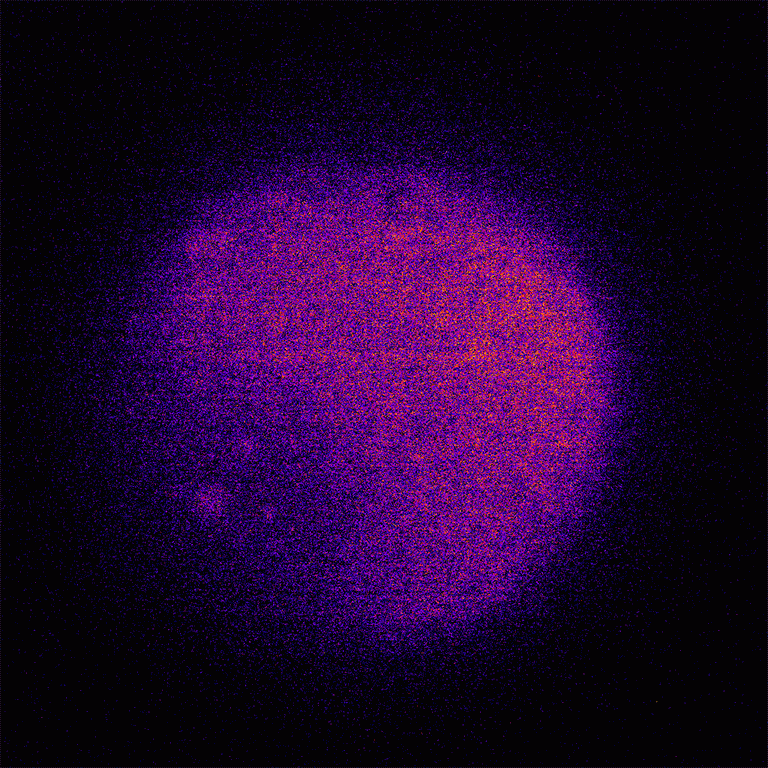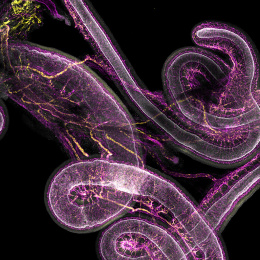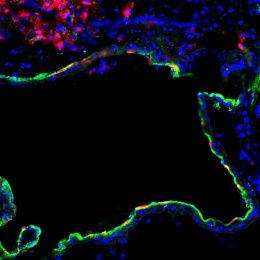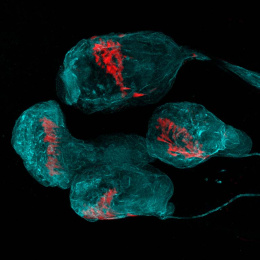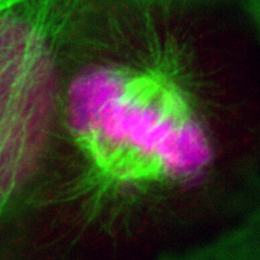Beyond Turing 4
Beyond Turing 4
MIT Department of Physics
Alan Turing described the ability of an initially homogeneous spatial system that contains diffusing and chemically interacting species to form a self-organized pattern. [His] original conjecture was that such processes contribute to the patterning of developing organisms.
While many examples have been found that are compatible with this idea, self-organized patterning during development, however, is known to not only rely on biochemical regulation but also depend on cell-and tissue-scale active mechanical processes. We explore general physical mechanisms by which the interplay between regulatory and mechanical processes endows active biological materials to form self-organized spatiotemporal patterns.
The images we have submitted are the early developmental process of meiosis in a starfish oocyte, highlighting the feedback between mechanical deformation of the oocyte and the chemical pattern of Rho GTPase. The primary objective of our research is to combine novel experimental techniques and mathematical modeling to elucidate how active mechanics and cell geometry, when coupled to chemical reactions, give rise to robust mechano-chemical patterns in living systems.
Read more about this work here.
